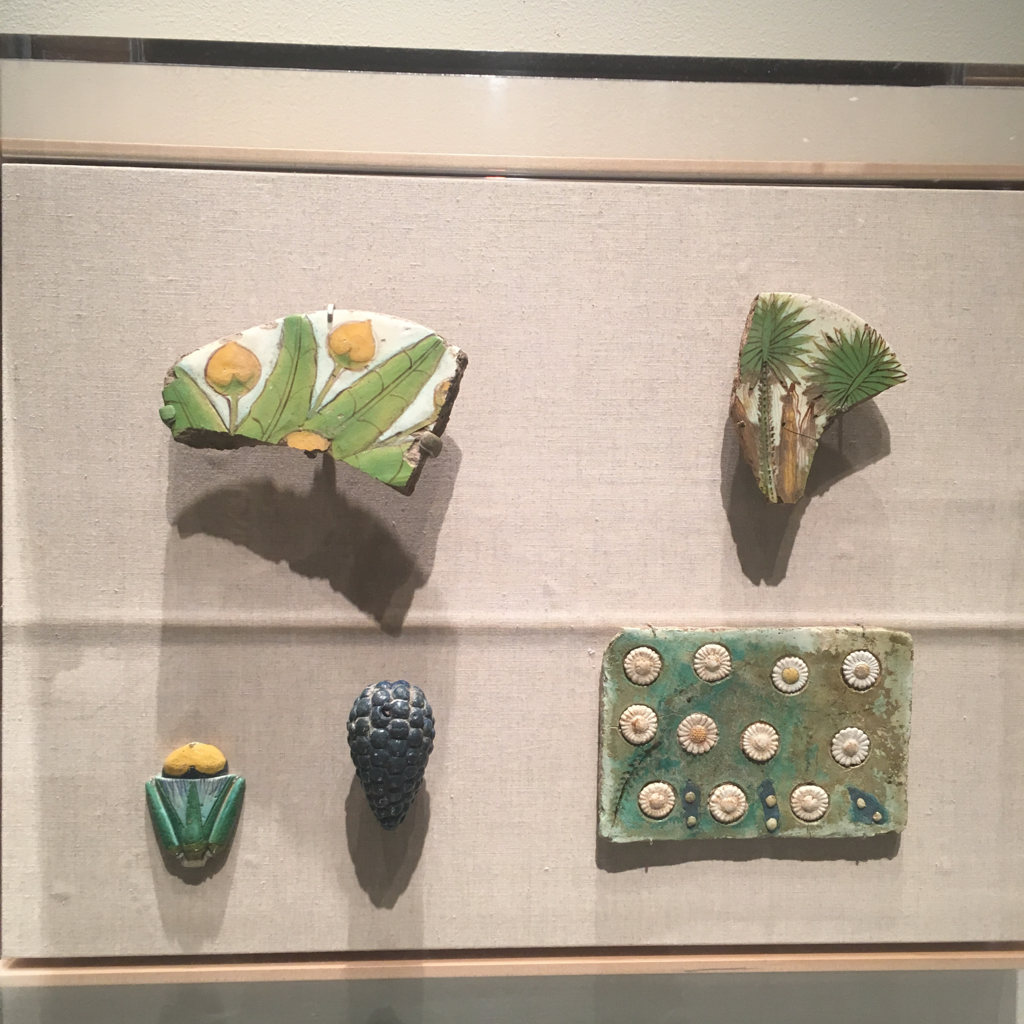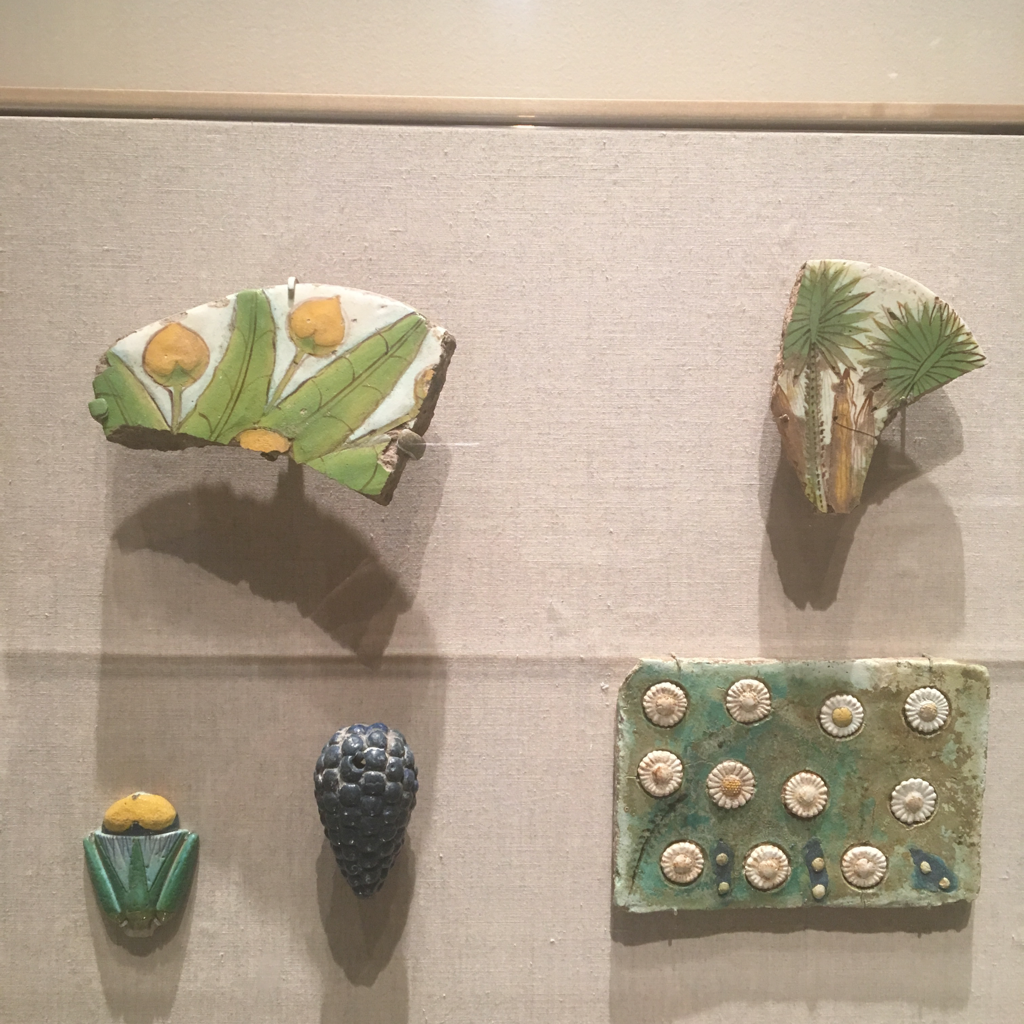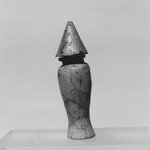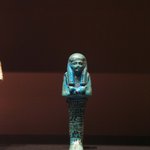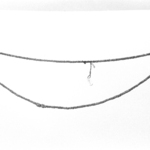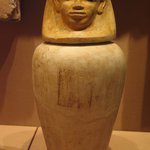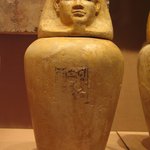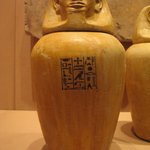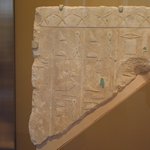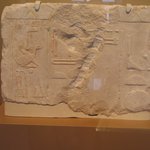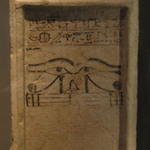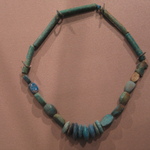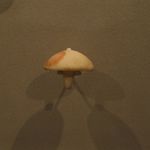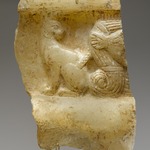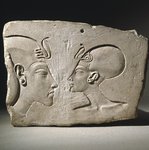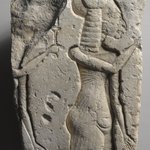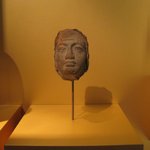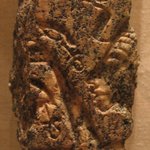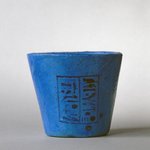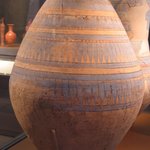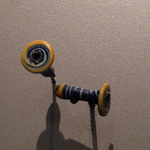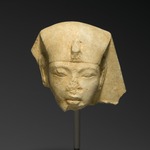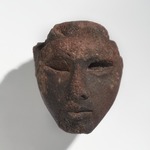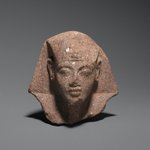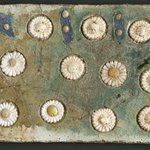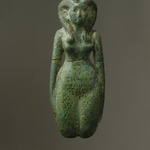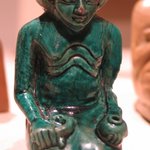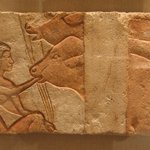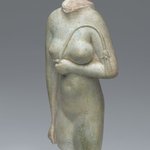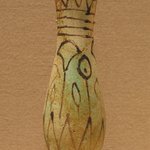
Floral Inlay
Egyptian, Classical, Ancient Near Eastern Art
On View: Amarna Period, Martha A. and Robert S. Rubin Gallery, 3rd Floor
The walls of the Great Palace at el Amarna were decorated with small inlays arranged to form complex scenes. In many of these scenes, members of the royal family present great formal bouquets to the Aten. This inlay—a yellow persea fruit and a lotus flower—was the uppermost element of one of these bouquets.
MEDIUM
Faience
DATES
ca. 1352–1336 B.C.E.
DYNASTY
late Dynasty 18
PERIOD
New Kingdom, Amarna Period
DIMENSIONS
2 1/2 × 1 15/16 in. (6.3 × 5 cm) (show scale)
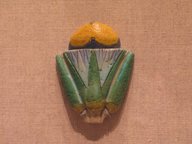


COLLECTIONS
Egyptian, Classical, Ancient Near Eastern Art
ACCESSION NUMBER
49.8
CREDIT LINE
Charles Edwin Wilbour Fund
PROVENANCE
Archaeological provenance not yet documented, probably from Tell el-Amarna, Egypt; by 1949, purchased at el Hag Kandil, Egypt from an unidentified source by Michel Abemayor of New York, NY; 1949, purchased from Michel Abemayor by the Brooklyn Museum.
Provenance FAQ
CATALOGUE DESCRIPTION
Polychrome faience lotus inlay. Open flower with petals in purple-blue grading into white, calyx in light green. At each side of lotus, a green bud. Inserted in center of lotus, a Mimusops fruit in dark blue and yellow glaze. Reverse of object undecorated, flat and glazed white. Interior hollow, pierced at center top and bottom. Apparently a detail from a composite inlay possible representing a “stabstrauss”.
Condition: Chipped at rear of base. Glaze intact.
EXHIBITIONS
MUSEUM LOCATION
This item is on view in Amarna Period, Martha A. and Robert S. Rubin Gallery, 3rd Floor
CAPTION
Floral Inlay, ca. 1352–1336 B.C.E. Faience, 2 1/2 × 1 15/16 in. (6.3 × 5 cm). Brooklyn Museum, Charles Edwin Wilbour Fund, 49.8. Creative Commons-BY (Photo: Brooklyn Museum, CUR.49.8_wwg7.jpg)
IMAGE
installation, West Wing gallery 7 installation, CUR.49.8_wwg7.jpg. Brooklyn Museum photograph, 2009
"CUR" at the beginning of an image file name means that the image was created by a curatorial staff member. These study images may be digital point-and-shoot photographs, when we don\'t yet have high-quality studio photography, or they may be scans of older negatives, slides, or photographic prints, providing historical documentation of the object.
RIGHTS STATEMENT
Creative Commons-BY
You may download and use Brooklyn Museum images of this three-dimensional work in accordance with a Creative Commons license. Fair use, as understood under the United States Copyright Act, may also apply.
Please include caption information from this page and credit the Brooklyn Museum. If you need a high resolution file, please fill out our online application form (charges apply).
For further information about copyright, we recommend resources at the United States Library of Congress, Cornell University, Copyright and Cultural Institutions: Guidelines for U.S. Libraries, Archives, and Museums, and Copyright Watch.
For more information about the Museum's rights project, including how rights types are assigned, please see our blog posts on copyright.
If you have any information regarding this work and rights to it, please contact copyright@brooklynmuseum.org.
RECORD COMPLETENESS
Not every record you will find here is complete. More information is available for some works than for others, and some entries have been updated more recently. Records are frequently reviewed and revised, and we welcome any additional information you might have.


